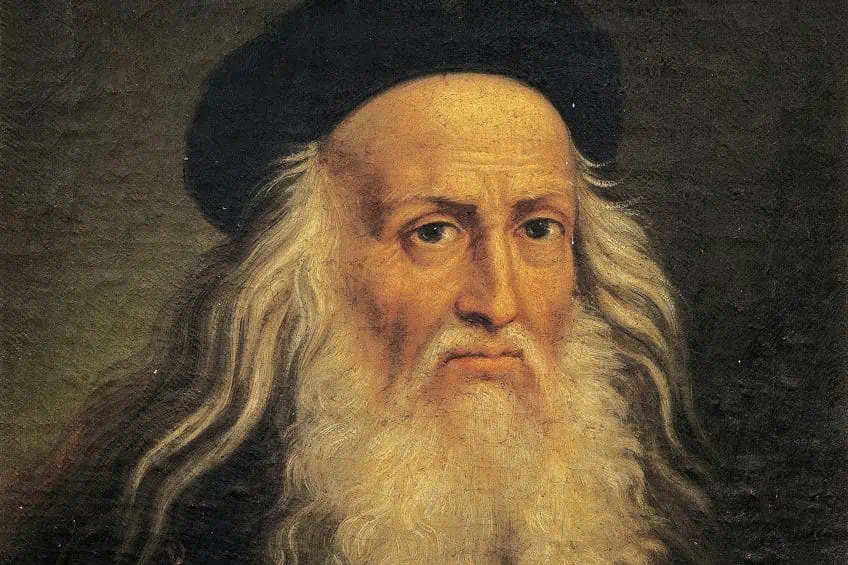Leonardo da Vinci Facts – Get to Know the Famous Painter Better
Who was Leonardo da Vinci and what is Leonardo da Vinci famous for? There are many questions surrounding this famous individual who was known for his expertise in many fields. In this article, we shall explore all the important Leonardo da Vinci facts, and answer your questions including, “when was Leonardo da Vinci born, and how did Leonardo da Vinci die?”.
Contents
- 1 The Most Interesting and Essential Leonardo da Vinci Facts
- 1.1 The Famous Artist Did Not Have a Surname
- 1.2 Da Vinci Did Not Receive a Formal Education
- 1.3 He Was Born Out of Wedlock
- 1.4 He Began to Apprentice at the Age of 15
- 1.5 He Loved Animals and Might Have Been a Vegetarian
- 1.6 The Human Body Fascinated Him
- 1.7 One of His Notebooks Is Owned by Bill Gates
- 1.8 Da Vinci Was Also a Talented Musician
- 1.9 Da Vinci’s Potentially Greatest Work Was Destroyed by War
- 1.10 He Was Left-Handed
- 1.11 Da Vinci Served as an Architect and Engineer for the Military
- 1.12 He Didn’t Really Produce Too Many Paintings
- 1.13 The Artist’s Last Years Were Spent in France
- 1.14 Despite Being Religious, He Did Not Agree with Many Aspects of the Bible
- 1.15 Da Vinci Designed Many Different Devices
- 1.16 Leonardo da Vinci Was Very Interested in Optics
- 1.17 He Was Interested in the Aging Process in the Human Body
- 1.18 He Was Regarded As the Embodiment of the Renaissance Man
- 2 Frequently Asked Questions
The Most Interesting and Essential Leonardo da Vinci Facts
While many people are aware of Leonardo da Vinci’s artworks, he was renowned for his work in many fields of study and was an individual with a wide scope of knowledge, known as a polymath. He painted and was interested in science, engineering, architecture, and sculpture. But where was Leonardo da Vinci born, was Leonardo da Vinci married at any point in his life, and when did Da Vinci die? Let’s find out the answers by checking out the most essential and interesting Leonardo da Vinci facts.
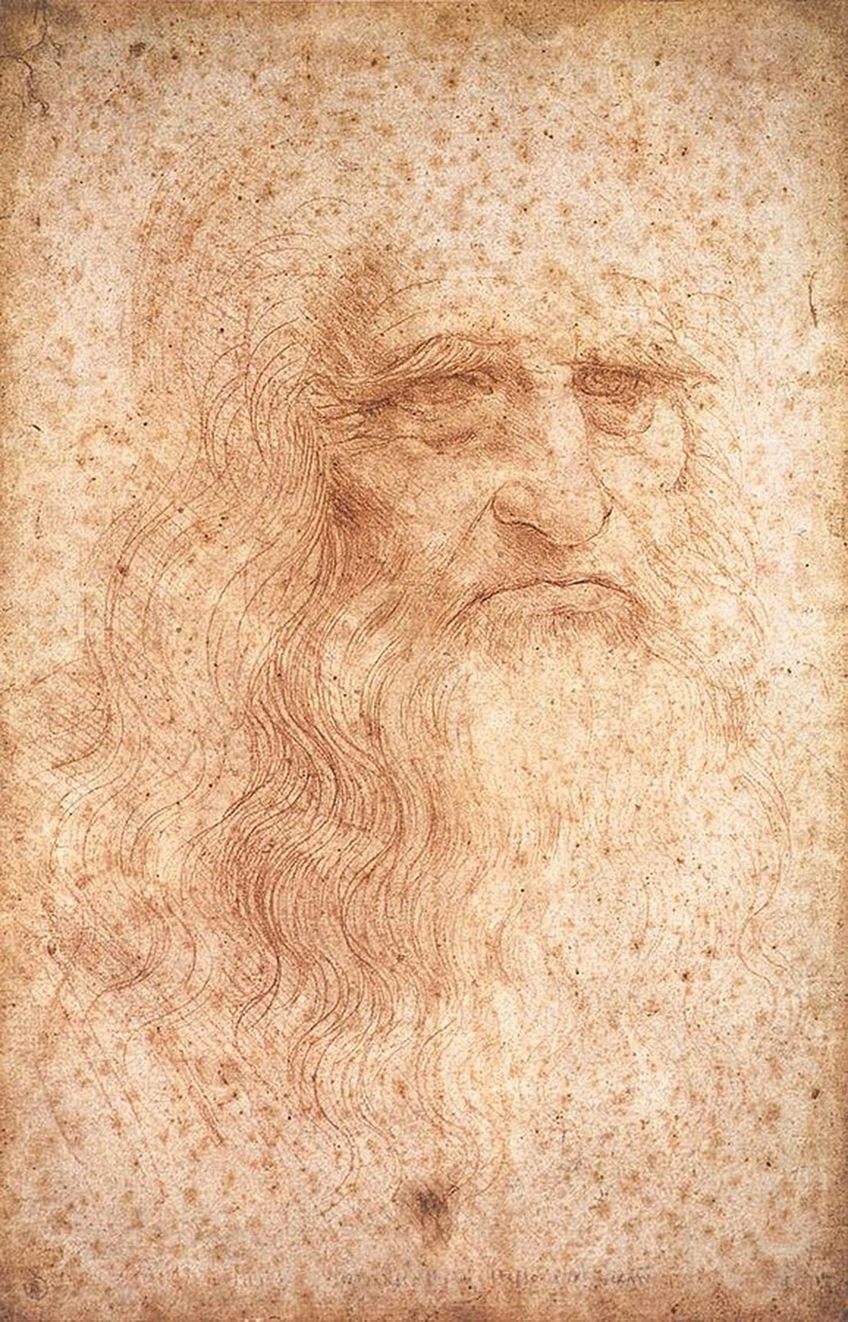
The Famous Artist Did Not Have a Surname
Although the artist is commonly simply known today as “Da Vinci”, the truth is that he did not actually possess a surname during his lifetime, well, certainly not in the contemporary sense. Da Vinci actually means “of Vinci”, which is where he was born. This was normal practice at the time and many people’s surnames from that era actually allude to their place of birth. Hereditary last names only became more commonly used among the aristocratic class during his lifetime, although they would not be generally used by many people until the mid-16th century.
As a result, most museums and scholarly texts still refer to him simply as Leonardo.
Da Vinci Did Not Receive a Formal Education
Da Vinci went to a neighborhood school in Vinci as a child, where he obtained rudimentary writing, reading, and arithmetic skills. Unfortunately, he did not get a formal education beyond this stage, as his illegitimate birth and low position in society would have made it impossible for him to enter an institution of higher learning. He followed his passions in science, art, and engineering through apprenticeships and self-directed study. He spent numerous hours learning and researching on his own, in addition to his practical instruction. He conducted comprehensive studies of the natural environment, performed dissections to examine human anatomy, and drew and sketched countless inventions and machine designs. Despite his lack of formal schooling, his intellect and quest for knowledge catapulted him to prominence as one of the most creative and original minds of his day.

He Was Born Out of Wedlock
Leonardo da Vinci was born in 1452 in the Tuscan hill town of Vinci, Italy, out of wedlock to a rich notary and a poor peasant lady. Children born out of marriage were stigmatized in Italian culture at that time, and they were frequently seen as illegitimate and regarded as second-class citizens. The stigma was particularly impactful in Da Vinci’s situation, whose mother was from a lower class and whose father belonged to the upper class. Ser Piero, his father, acknowledged him as his son and gave some financial assistance. He did not, however, recognize him as his heir, and as a result, he was denied the same advantages and privileges as actual upper-class children.
But, his exceptional intellect and tenacity enabled him to overcome these challenges.
He Began to Apprentice at the Age of 15
Leonardo da Vinci began his artistic instruction as a youth, as was common in the period. He was able to attend the workshop of acclaimed artist Andrea del Verrocchio at the age of 15 because of his father’s strong reputation. He would acquire not just the fundamentals of painting and sculpting, but also engineering and technical skills. Drafting, chemistry, metallurgy, and metalworking were among the subjects covered. At the same time, he was employed at Antonio Pollaiuolo’s workshop, which was right next door. At the age of 20, he was welcomed into Florence’s painter’s guild, but he spent the next half a decade studying under Verrocchio before venturing out on his own.
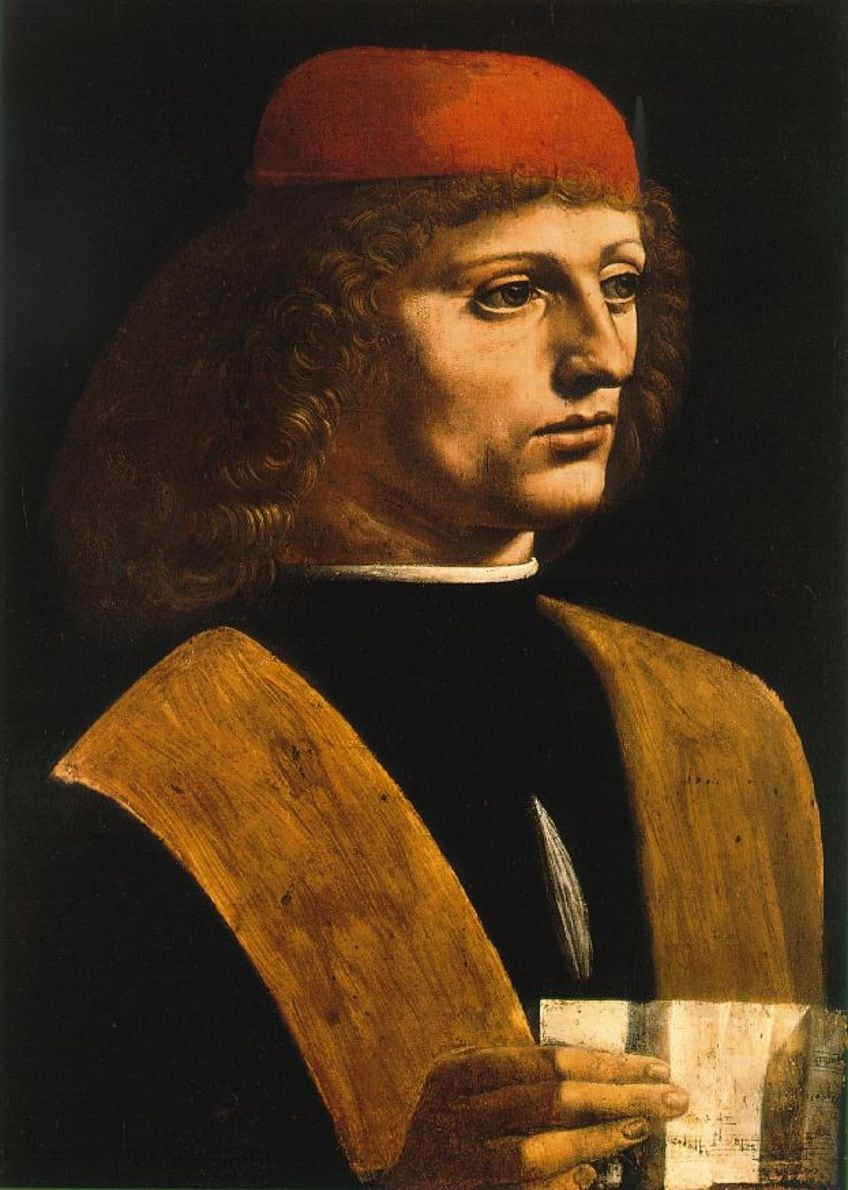
He Loved Animals and Might Have Been a Vegetarian
Leonardo da Vinci’s artworks were recognized for his detailed studies of the natural world, and he drew and sketched several animals, including cats, horses, and birds. He also dissected animals to study their anatomy, gaining a better grasp of their physical makeup. Some historians argue that he may have been receptive to the notion of vegetarianism, as he felt that all living creatures shared a similar vital energy and that the practice of murdering animals for sustenance was a sort of violence. He stated in his notes, “the day will arrive when men such as I will gaze upon the slaughter of animals as they currently look upon the slaughter of humanity”.
Yet, it should be noted that vegetarianism was not a well-known idea during his day, and there is no definite indication that he followed a vegetarian diet himself.
The Human Body Fascinated Him
Leonardo da Vinci’s never-ending passion for knowledge included the human body. Not content with only studying what was already documented, he expanded his understanding by undertaking up to 30 human dissections at hospitals in Florence, Milan, and Rome. His fascination with anatomy grew so strong that it grew to become its own field of study, irrespective of how it inspired his creative work. He was intrigued by the structure of human anatomy from a very early age, and he also began physiological studies. His depictions of how the heart, brain, and lungs operate as the center of the organism are still regarded as scientific achievements. In reality, his anatomical drawings were not only aesthetically notable, but they also significantly contributed to the development of contemporary scientific illustration.
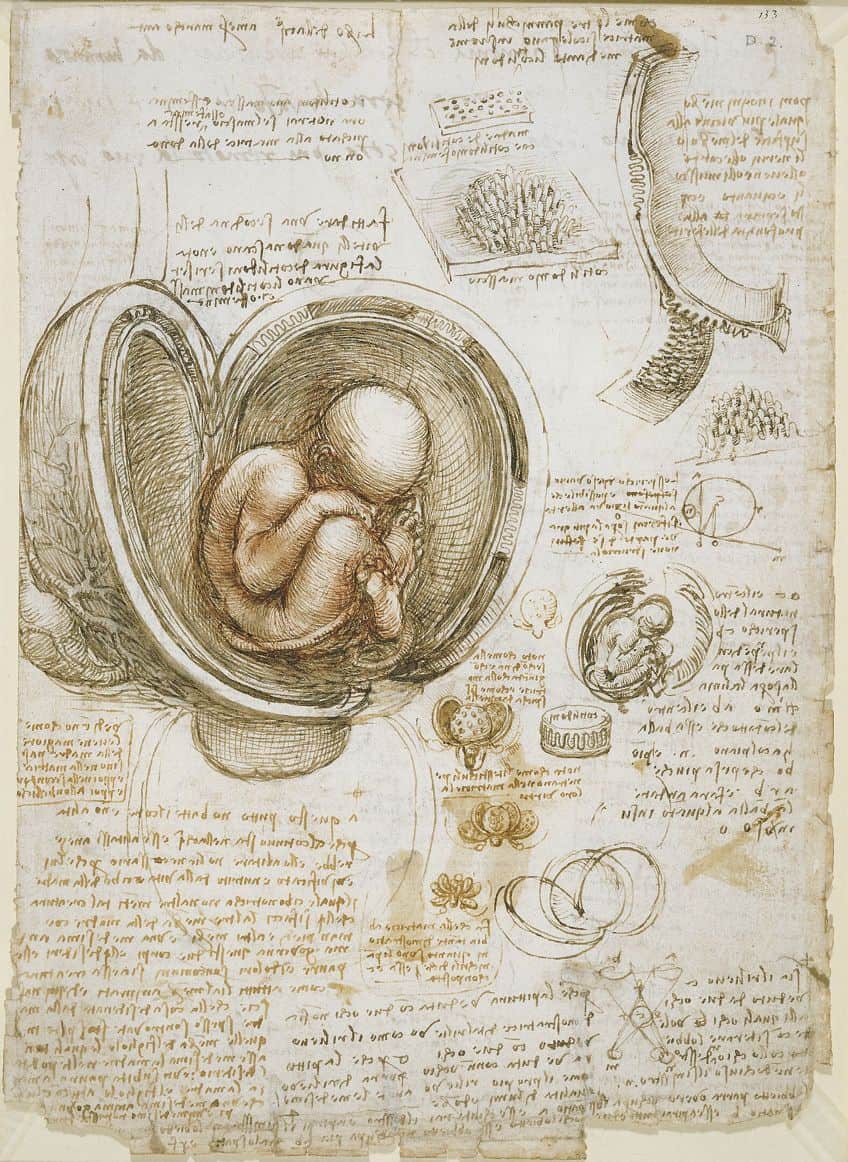
One of His Notebooks Is Owned by Bill Gates
With such a voracious hunger for learning, it’s no wonder that he was a prolific writer. Several of his famous notebooks are housed in prestigious institutions such as the Victoria & Albert Museum and the British Library, but one, in particular, is in the possession of a contemporary genius. Bill Gates paid $30.8 million for one of them, the Codex Leicester, during an auction in 1994. The notebook is a 72-page manuscript that contains drawings, thoughts, and hypotheses of Leonardo da Vinci regarding the natural world, specifically the flow of water and the qualities of light.
It was composed between 1506 and 1510 and comprises a number of scientific speculations on topics ranging from why the sky is blue to the brightness of the Moon to how fossils formed.
Da Vinci Was Also a Talented Musician
Leonardo da Vinci, according to historical records, mastered the lira da braccio, a stringed instrument prominent in Renaissance Italy. He might have additionally played other instruments, such as the viola, and he may have written music as well. Da Vinci enjoyed relationships with some of the most renowned musicians of his day. He was well acquainted with singer and composer Francesco da Milano, who was regarded as one of the Renaissance’s best lutenists, and he crafted a collection of musical instruments for the court of the Duke of Milan, Ludovico Sforza, where he worked for a number of years. In his notebooks, he wrote musical compositions and he even made a silver lyre in the likeness of a horse’s head.

Da Vinci’s Potentially Greatest Work Was Destroyed by War
Da Vinci is well-known for his renowned artwork, yet his greatest masterpiece was never completely realized. He departed Florence and headed for Milan in 1482, presumably enticed by a commission for a massive horse monument commemorating Francesco Sforza. When finished, it would have been bigger than Donatello and Verrocchio’s other two Renaissance equestrian sculptures. It would have stood more than 16 feet tall and was requested by Sforza’s son, Duke of Milan. Da Vinci worked on the project for 17 years, which, given his numerous pursuits, the extended schedule was not unusual. In 1493, after 12 years, a clay model of the sculpture was eventually displayed, and Da Vinci worked on comprehensive designs to cast it in bronze. Regrettably, the metal intended for the sculpture was instead assigned for weapons because of the impending French invasion.
The Duke was deposed in 1499, and the clay model was destroyed when French forces attacked the city, depriving us of what could have been one of the great Renaissance masterpieces.
He Was Left-Handed
Leonardo da Vinci was left-handed, which was unusual at the time. His left-handedness is thought to have impacted Leonardo da Vinci’s artworks, especially his writing because he had to use a mirror script to prevent blurring his work with his hand when writing. This method was likely faster for him because he could work from right to left. In addition, he designed a number of symbols that he used in his notes. At first impression, these methods also masked the content of his work. Furthermore, some experts feel that da Vinci’s left-handedness led to his distinct painting and drawing technique. His left-handedness, for instance, might have influenced his penchant for diagonal lines and a sense of motion in his work.
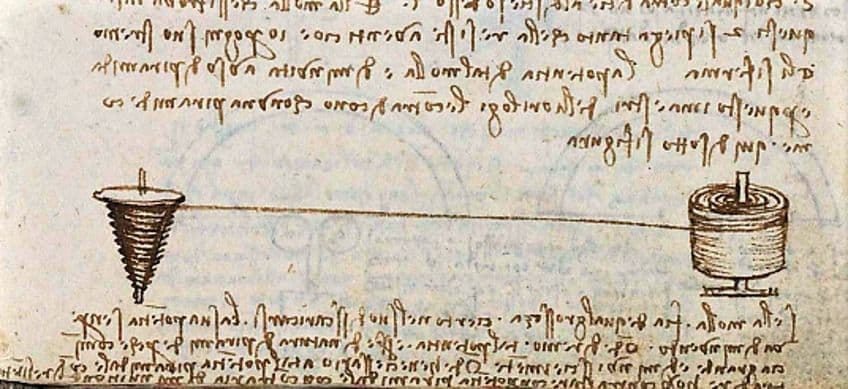
Da Vinci Served as an Architect and Engineer for the Military
Da Vinci’s career as a military architect and engineer is sometimes overshadowed by his artistic accomplishments, but he also made substantial contributions in this sector. He was commissioned by numerous military commanders and city-states to develop siege weapons, fortifications, and other military equipment. Da Vinci also created and improved on a variety of cannons, including a multi-barreled organ gun capable of firing many projectiles at once. He also designed numerous sorts of armored vehicles, such as the “armored car”, a tank-like contraption with guns that could travel in any direction. Da Vinci developed multiple ingenious fortification methods for protecting towns and castles. He suggested utilizing concentric rings of walls, with each wall inclined to give more protection from hostile fire.
He also proposed constructing artificial valleys and hills to make approaching a defended position more challenging for enemy forces.
He Didn’t Really Produce Too Many Paintings
While Da Vinci is considered to be among the greatest artists in history, his artistic output was modest. In truth, there are just around 17 compositions that can be positively attributed to him that have survived. Some of this was due to his hyperactive mind. He often went through extended periods where he wasn’t accepting contracts or painting much since he was preoccupied with scientific studies and engineering concerns. Several of his most well-known paintings are only known through preliminary drawings or reproductions done by other artists after they were lost, ruined, or degraded over time. His unrivaled reputation, on the other hand, attests to the level of his ability. Yet, despite only producing so few completed works, it’s still hard to deny his impact on painters of his day and future generations.
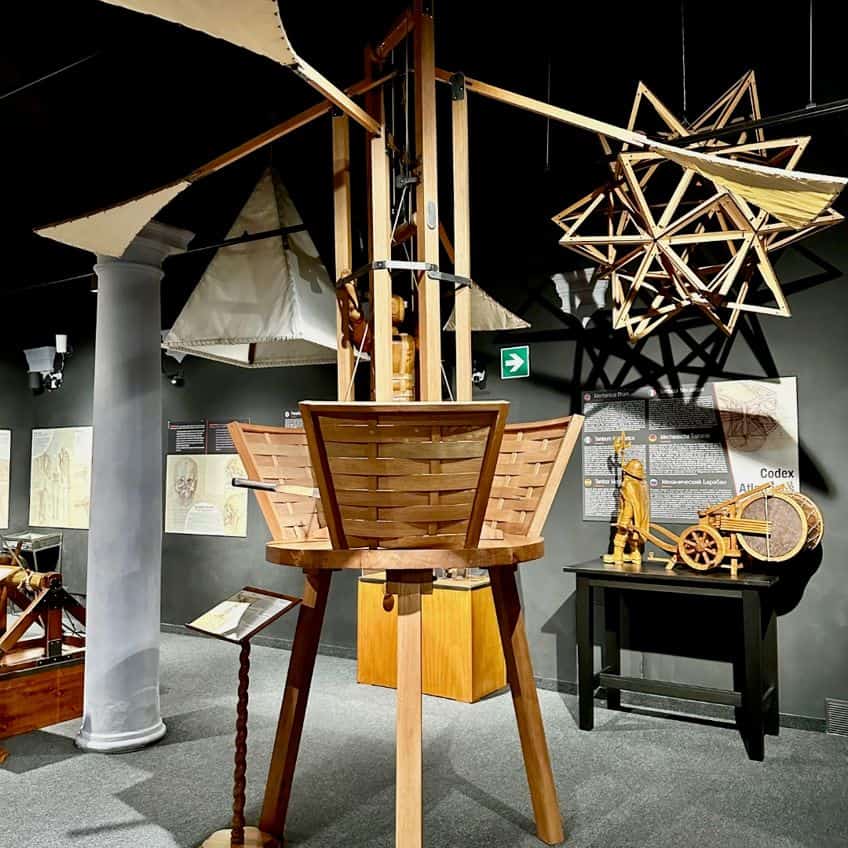
The Artist’s Last Years Were Spent in France
Due to political unrest, Da Vinci was compelled to depart Milan when he was 60 years old. This brought him to Rome, where he was entertained by the Pope’s brother, Giuliano de Medici. While the artist hoped to find employment in Rome, he was merely handed a stipend and left to his own devices, while other painters such as Michelangelo and Raphael worked on commissions for the Pope. This deeply irritated Da Vinci, and five years later he joyfully accepted the king of France’s invitation to consider working for him. In 1516, at the age of 65, he departed Italy and never returned. While in France, he didn’t paint much, but he did spend a lot of time concentrating on his scientific pursuits. He passed away only a few short years after settling in France and was interred at the Château d’Amboise’s Collegiate Chapel of Saint Florentin.
Tragically, the church was destroyed in 1802 after being dented during the French Revolution. Because some of the tombs were also damaged, historians are unsure of where his body is laid to rest.
Despite Being Religious, He Did Not Agree with Many Aspects of the Bible
Leonardo da Vinci was a highly religious person who yet had a rational and scientific view of the universe. As a result, he disagreed with the Bible’s explanation of time and the formation of the cosmos. The Bible, for instance, depicts the creation of the cosmos in six days, with each day reflecting a literal 24-hour period. Da Vinci’s views of the natural world, as well as his knowledge of geology and astronomy, indicated that the cosmos was far older and more intricate than the Bible’s portrayal. Da Vinci was equally fascinated by the concept of infinity, as well as the notion that both space and time were boundless. This was a divergence from the Bible’s concept of a limited cosmos established at a specified time. It is crucial to note, though, that da Vinci lived during a period when both religion and science were not regarded as different realms of study. Many of his contemporaries were intensely religious and considered their scientific study as a means to better grasp the mysteries of God’s creation.
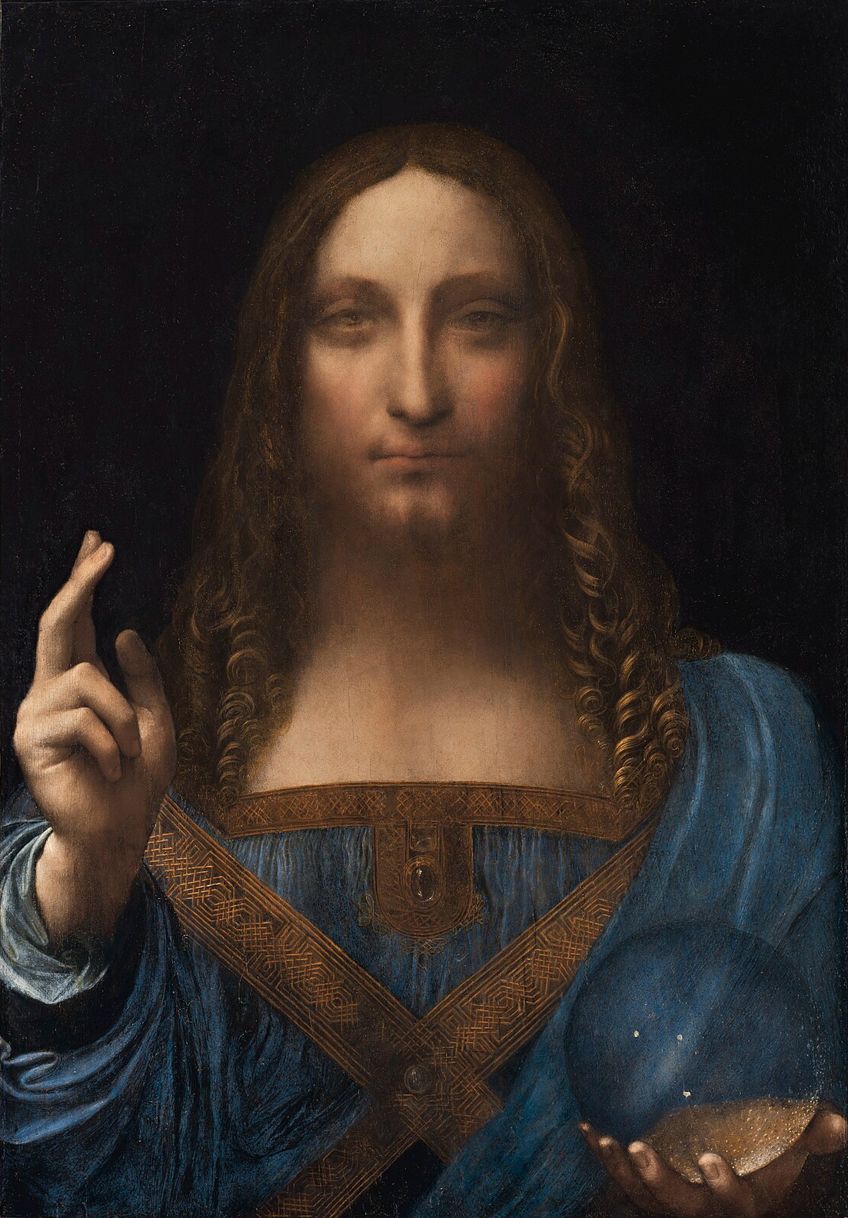
Da Vinci Designed Many Different Devices
Leonardo da Vinci was not only a well-known painter and scientist, but he was also a talented inventor who made designs for several devices that were way beyond their time. Da Vinci was attracted to the notion of flight and created many flying vehicles, including an ornithopter, a flying machine with wings that flap like a bird, as well as a glider that could be directed by the pilot’s motions. He was interested in the qualities of water and created various hydraulic-powered equipment, including a water-powered sawmill and even a hydraulic press. He created numerous types of bridges, such as self-supporting bridges that could be erected without the assistance of scaffolding.
Leonardo da Vinci also invented a diving suit, a spinning bridge, a parachute, and a device for evaluating the strength of materials.
Leonardo da Vinci Was Very Interested in Optics
Leonardo da Vinci was fascinated with optics and the qualities of light, and he undertook several experiments to examine its behavior. Da Vinci experimented with light reflection and refraction, which he described in his notebooks. He discovered that light reflects off surfaces at identical angles and that the refraction angle varies depending on the substance through which it passes. He was among the first to describe the camera obscura, which reflects an impression of the outside world onto a surface within a darkened chamber. He utilized this instrument to investigate the qualities of light and to help in the creation of his artworks. Da Vinci was also fascinated by the mechanics of the human eye, and he experimented to learn how the eye senses both color and light.
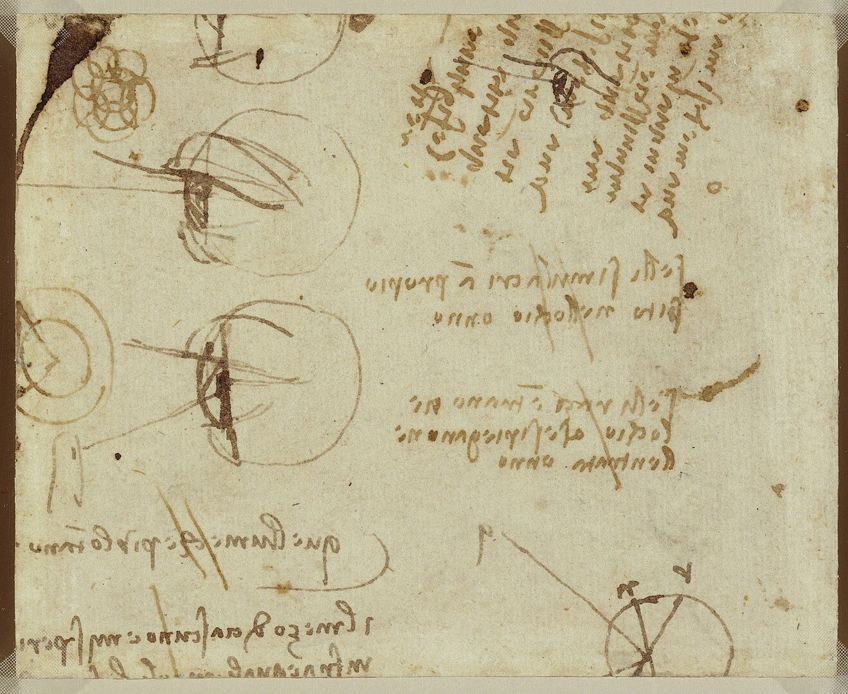
He Was Interested in the Aging Process in the Human Body
Da Vinci felt that emotions might have a significant impact on the physiology of the body. Fear, rage, and melancholy, he discovered, may all produce changes in blood pressure, heart rate, and breathing patterns. He was also fascinated by the effects of aging on the body. He saw that as individuals become older, their skin thins, their hair grays, and their joints stiffen. He also mentioned how the brain and other organs change as individuals age. Da Vinci was also fascinated by the cardiovascular system and blood circulation.
He created various anatomical drawings depicting the anatomy of the heart and blood arteries.
He Was Regarded As the Embodiment of the Renaissance Man
Leonardo da Vinci is widely considered the “Renaissance Man” because of his understanding of various subjects of study and his revolutionary ideas that helped alter the intellectual and cultural environment of his day. He was an engineer, scientist, and inventor, in addition to an artist, who was fascinated by the natural world and made substantial contributions to subjects such as optics, anatomy, and hydrodynamics. His interests extended beyond art and science to encompass music, philosophy, literature, and even military strategy. He was always looking for new ways to enhance his knowledge and comprehension of the world. Da Vinci’s designs and ideas were frequently ahead of their time, demonstrating his ability to think imaginatively and beyond the box. He was not hesitant to question conventional thinking and was always looking for new methods to solve challenges and significantly improve existing technology.

That wraps up our investigation of the most interesting Leonardo da Vinci facts. Not only an artist but a polymath whose interests spanned countless fields of study, Da Vinci continues to inspire people today. Thankfully, much of his work and notebooks have survived to give us insight into his incredible brain and artistic talent.
Frequently Asked Questions
Who Was Leonardo da Vinci and What Is Leonardo da Vinci Famous For?
Leonardo da Vinci is regarded by many people as a genius of his time. He lived during the Italian Renaissance and was very influential in art circles, and had a significant impact not only in his own time, but for centuries to follow. He is most well-known for his iconic paintings, such as Mona Lisa (1503).
When Was Leonardo da Vinci Born?
Da Vinci was born on the 15th of April 1452. He lived in the Renaissance era in Italy, which was known for being an era of great advancement in art and culture. Many consider him to be the physical embodiment of this important era of progression.
When Did Da Vinci Die and How Did Leonardo da Vinci Die?
The famous artist died on the 2nd of May 1519, aged 67. It is thought that he suffered a stroke. It is said that he lamented on his deathbed that he had not practiced his art enough.
Was Leonardo da Vinci Married at Any Point?
No, he never married anyone. He did, however, enjoy many close relationships. There is no indication of any intimate relationships, though.
Where Was Leonardo da Vinci Born?
He was born in a little village in Italy known as Anchiano. This little village is situated close to Vinci, and this is where his surname comes from.
Jordan Anthony is a Cape Town-based film photographer, curator, and arts writer. She holds a Bachelor of Art in Fine Arts from the University of the Witwatersrand, Johannesburg, where she explored themes like healing, identity, dreams, and intuitive creation in her Contemporary art practice. Jordan has collaborated with various local art institutions, including the KZNSA Gallery in Durban, the Turbine Art Fair, and the Wits Art Museum. Her photography focuses on abstract color manipulations, portraiture, candid shots, and urban landscapes. She’s intrigued by philosophy, memory, and esotericism, drawing inspiration from Surrealism, Fluxus, and ancient civilizations, as well as childhood influences and found objects. Jordan is working for artfilemagazine since 2022 and writes blog posts about art history and photography.
Learn more about Jordan Anthony and about us.
Cite this Article
Jordan, Anthony, “Leonardo da Vinci Facts – Get to Know the Famous Painter Better.” artfilemagazine – Your Online Art Source. October 23, 2023. URL: https://artfilemagazine.com/leonardo-da-vinci-facts/
Anthony, J. (2023, 23 October). Leonardo da Vinci Facts – Get to Know the Famous Painter Better. artfilemagazine – Your Online Art Source. https://artfilemagazine.com/leonardo-da-vinci-facts/
Anthony, Jordan. “Leonardo da Vinci Facts – Get to Know the Famous Painter Better.” artfilemagazine – Your Online Art Source, October 23, 2023. https://artfilemagazine.com/leonardo-da-vinci-facts/.


